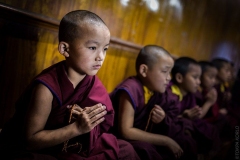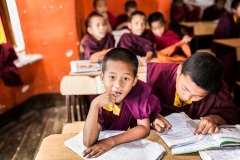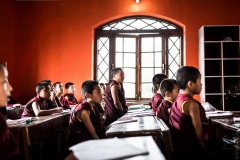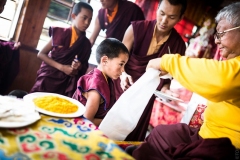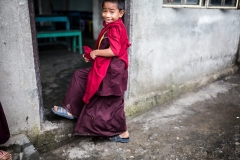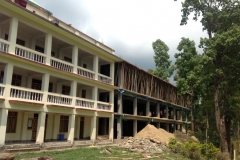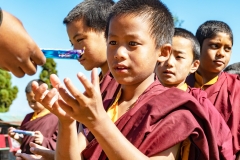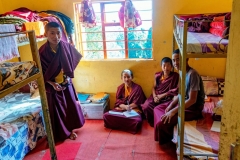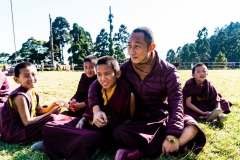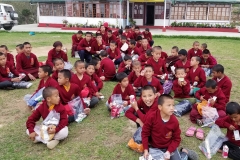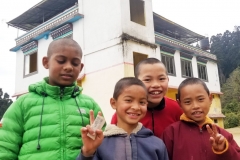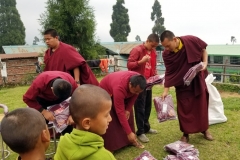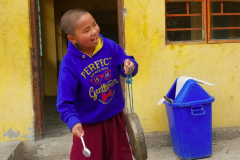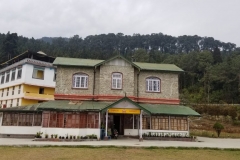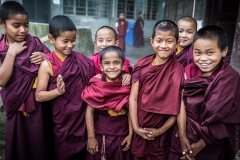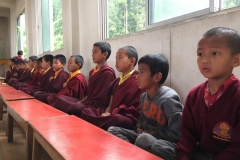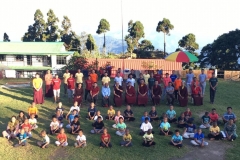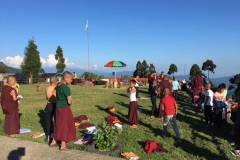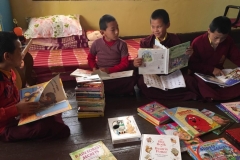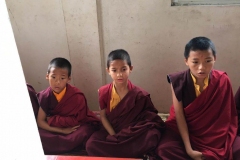Diwakar Primary School
Update September 2019
Right now, there are about 80 boys visiting the Diwakar Primary School in Takdah/Darjeeling (and just the same number of students are studying in Kalimpong at the academy). Most of them come here in the age of 10, some are even younger. When the boys are just 6 or 7 years old, they mostly repeat the first two years to gain a better understanding and have a better foundation for the challenges at school. The seven employed teachers grant them a basic education according to the Indian Government as well as English, Nepali and Tibetan.
The majority of the children comes from poor families or they are orphans looking for shelter, support and education. Here they find accommodation, food, medical treatments and education. The persons in charge of the boys are normal teachers as well as some who have gone to this school themselves and have finished their studies at the academy in Kalimpong. They are then very familiar with the conditions and know best what the boys need.
In addition to the classical school education the boys are taught ethical conduct and learn to be mindful with all beings and the environment. Thus, they gain excellent conditions for their future lives.
Accommodation, food, clothes, care and education for one child is about € 30 per month and we are happy about everybody willing to support the school and the children with a one-off donation or on a regular basis. Each donation is a very helpful contribution!
Watch the video of Jigme Rinpoche visiting the school.

Report about earthquake damage 2010: Monks‘ school for 120 pupils (new construction and repair work)
The main building (an old colonial building) was heavily damaged because of the earthquake in 2010 and cannot be used as a school due to danger of collapsing. Willi Kröger, a German architect, estimated that it can be used later as a guest house and administration building. But a lot of work will have to be done before, such as pulling down the roof as well as some walls. The cost still has to be investigated.
Luckily all 80 pupils and teachers were not in the building during the earthquake and nobody was injured. However all pupils found provisional accommodation in tents for the time being. The education as well as serving of meals take place in a damaged extension of a building. During monsoon season this situation will be unbearable and building measures are urgently necessary. Preferably a new building has to be constructed next to the main building, situated on the sloping ground. This will provide accommodation for studying, eating and other necessary rooms. A required extension of capacity to 120 pupils also needs to be considered.
Planning is in progress (documentation of the structural analysis will be available shortly) in order to finish at least part of the first building, before the monsoon season starts. To be better protected against earthquakes in the future, the complete building complex will be flexibly connected in separate parts. The structural analysis will of course be calculated accordingly, which again will automatically increase the costs. This will allow building on different types of soil on the steep slope as well as using a staged construction process.








